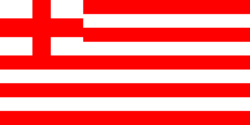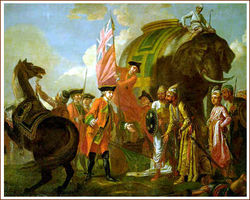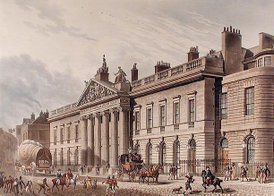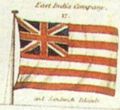British East India Company
2007 Schools Wikipedia Selection. Related subjects: British History 1500-1750; Companies
The BEIC, sometimes referred to as "John Company", was a joint-stock company which was granted an English Royal Charter by Elizabeth I on December 31, 1600, with the intention of favouring trade privileges in India. The Royal Charter effectively gave the newly created Honourable East India Company (HEIC) a 21 year monopoly on all trade in the East Indies. The Company transformed from a commercial trading venture to one which virtually ruled India as it acquired auxiliary governmental and military functions, until its dissolution in 1858.
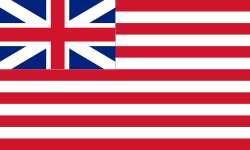
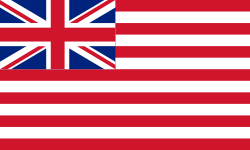
Impact
Based in London, the company presided over the creation of the British Raj. In 1617, the Company was given trade rights by the Mughal Emperor. 100 years later, it was granted a royal dictate from the Emperor exempting the Company from the payment of custom duties in Bengal, giving it a decided commercial advantage in the Indian trade. A decisive victory by Sir Robert Clive at the Battle of Plassey in 1757 established the British East India Company as a military as well as a commercial power. By 1760, the French were driven out of India, with the exception of a few trading posts on the coast, such as Pondicherry.
The Company also had interests along the routes to India from Great Britain. As early as 1620, the company attempted to lay claim to the Table Mountain region in South Africa, later it occupied and ruled St Helena. The Company also established Hong Kong and Singapore; employed Captain Kidd to combat piracy; and cultivated the production of tea in India. Other notable events in the Company's history were that it held Napoleon captive on St Helena, and made the fortune of Elihu Yale. Its products were the basis of the Boston Tea Party in Colonial America.
Its shipyards provided the model for St Petersburg, elements of its administration survive in the Indian bureaucracy, and its corporate structure was the most successful early example of a joint stock company. However, the demands of Company officers on the treasury of Bengal contributed tragically to the province's incapacity in the face of a famine which killed millions in 1770-1773.
History
The foundation years
The Company was founded as The Company of Merchants of London Trading into the East Indies by a coterie of enterprising and influential businessmen, who obtained the Crown's charter for exclusive permission to trade in the East Indies for a period of fifteen years. The Company had 125 shareholders, and a capital of £72,000. Initially, however, it made little impression on the Dutch control of the spice trade and at first it could not establish a lasting outpost in the East Indies. Eventually, ships belonging to the company arrived in India, docking at Surat, which was established as a trade transit point in 1608. In the next two years, it managed to build its first factory (as the trading posts were known) in the town of Machilipatnam in the Coromandel Coast in the Bay of Bengal. The high profits reported by the Company after landing in India (presumably owing to a reduction in overhead costs effected by the transit points), initially prompted King James I to grant subsidiary licenses to other trading companies in England. But, in 1609, he renewed the charter given to the Company for an indefinite period, including a clause which specified that the charter would cease to be in force if the trade turned unprofitable for three consecutive years.
Original organization structure
The Company was led by one Governor and 24 directors who made up the Court of Directors. They were appointed by, and reported to, the Court of Proprietors. The Court of Directors had ten committees reporting to it.
Footholds in India
Traders were frequently engaged in hostilities with their Dutch and Portuguese counterparts in the Indian Ocean. A key event providing the Company with the favour of Mughal emperor Jahangir was their victory over the Portuguese in the Battle of Swally in 1612. Perhaps realizing the futility of waging trade wars in remote seas, the English decided to explore their options for gaining a foothold in mainland India, with official sanction of both countries, and requested the Crown to launch a diplomatic mission. In 1615, Sir Thomas Roe was instructed by James I to visit the Mughal emperor Jahangir (who ruled over most of the subcontinent, along with Afghanistan). The purpose of this mission was to arrange for a commercial treaty which would give the Company exclusive rights to reside and build factories in Surat and other areas. In return, the Company offered to provide to the emperor goods and rarities from the European market. This mission was highly successful and Jahangir sent a letter to the King through Sir Thomas Roe. He wrote:
- Upon which assurance of your royal love I have given my general command to all the kingdoms and ports of my dominions to receive all the merchants of the English nation as the subjects of my friend; that in what place soever they choose to live, they may have free liberty without any restraint; and at what port soever they shall arrive, that neither Portugal nor any other shall dare to molest their quiet; and in what city soever they shall have residence, I have commanded all my governors and captains to give them freedom answerable to their own desires; to sell, buy, and to transport into their country at their pleasure.
- For confirmation of our love and friendship, I desire your Majesty to command your merchants to bring in their ships of all sorts of rarities and rich goods fit for my palace; and that you be pleased to send me your royal letters by every opportunity, that I may rejoice in your health and prosperous affairs; that our friendship may be interchanged and eternal.
Expansion
The company, under such obvious patronage, soon managed to eclipse the Portuguese, who had established their bases in Goa and Bombay (which was later ceded to England as part of the dowry of Catherine de Braganza). It managed to create strongholds in Surat (where a factory was built in 1612), Madras (1639), Bombay (1668) and Calcutta (1690). By 1647, the Company had 23 factories and 90 employees in India. The major factories became the walled forts of Fort William in Bengal, Fort St George in Madras and the Bombay Castle. In 1634, the Mughal emperor extended his hospitality to the English traders to the region of Bengal (and in 1717 completely waived customs duties for the trade). The company's mainstay businesses were by now in cotton, silk, indigo, saltpeter and tea. All the while, it was making inroads into the Dutch monopoly of the spice trade in the Malaccan straits. In 1711, the Company established a trading post in Canton (Guangzhou), China, to trade tea for silver. In 1657, Oliver Cromwell renewed the charter of 1609, and brought about minor changes in the holding of the Company. The status of the Company was further enhanced by the restoration of monarchy in England. By a series of five acts around 1670, King Charles II provisioned it with the rights to autonomous territorial acquisitions, to mint money, to command fortresses and troops and form alliances, to make war and peace, and to exercise both civil and criminal jurisdiction over the acquired areas. The Company, surrounded by trading competitors, other imperial powers, and sometimes hostile native rulers, experienced a growing need for protection. The freedom to manage its military affairs thus came as a welcome boon and the Company rapidly raised its own armed forces in the 1680s, mainly drawn from the indigenous local population. By 1689, the Company was arguably a "nation" in the Indian mainland, independently administering the vast presidencies of Bengal, Madras and Bombay and possessing a formidable and intimidating military strength. From 1698 the company was entitled to use the motto "Auspico Regis et Senatus Angliae" meaning, "Under the patronage of the King and Parliament of England".
The road to a complete monopoly
Trade monopoly
The prosperity that the employees of the company enjoyed allowed them to return to their country and establish sprawling estates and businesses and obtain political power. Consequently, the Company developed for itself a lobby in the English parliament. However, under pressure from ambitious tradesmen and former associates of the Company (pejoratively termed Interlopers by the Company), who wanted to establish private trading firms in India, a deregulating act was passed in 1694. This act allowed any English firm to trade with India, unless specifically prohibited by act of parliament, thereby annulling the charter that was in force for almost 100 years. By an act in 1698, a new "parallel" East India Company (officially titled the English Company Trading to the East Indies) was floated under a state-backed indemnity of £2 million. However, the powerful stockholders of the old company quickly subscribed a sum of £315,000 in the new concern, and dominated the new body. The two companies wrestled with each other for some time, both in England and in India, for a dominant share of the trade. But it quickly became evident, that in practice, the original Company scarcely faced any measurable competition. Both companies finally merged in 1702, by a tripartite indenture involving the state and the two companies. Under this arrangement, the merged company lent to the Treasury a sum of £3,200,000, in return for exclusive privileges for the next three years—after which the situation was to be reviewed. The amalgamated company became the United Company of Merchants of England Trading to the East Indies.
What followed in the next decades was a constant see-saw battle between the Company lobby and the parliament. The Company sought a permanent establishment, while the Parliament would not willingly relinquish the opportunity to exploit the Company's profits by allowing it a greater autonomy. In 1712, another act renewed the status of the Company, though the debts were repaid. By 1720, 15% of British imports were from India, almost all passing through the Company, which reasserted the influence of the Company lobby. The license was prolonged until 1766 by yet another act in 1730.
At this time, Britain and France became bitter rivals, and there were frequent skirmishes between them for control of colonial possessions. In 1742, fearing the monetary consequences of a war, the government agreed to extend the deadline for the licensed exclusive trade by the Company in India until 1783, in return for a further loan of £1 million. The skirmishes did escalate to the feared war, and between 1756 and 1763 the Seven Years' War diverted the state's attention towards consolidation and defence of its territorial possessions in Europe and its colonies in North America. The war also took place on Indian soil, between the Company troops and the French forces. Around the same time, Britain surged ahead of its European rivals with the advent of the Industrial Revolution. Demand for Indian commodities was boosted by the need to sustain the troops and the economy during the war, and by the increased availability of raw materials and efficient methods of production. As home to the revolution, Britain experienced higher standards of living, and this spiralling cycle of prosperity, demand and production had a profound influence on overseas trade. The Company became the single largest player in the British global market, and reserved for itself an unassailable position in the decision-making process of the Government.
William Pyne notes in his book The Microcosm of London (1808) that
- On the 1st March, 1801, the debts of the East India Company amounted to £5,393,989 their effects to £15,404,736 and their sales increased since February 1793, from £4,988,300 to £7,602,041.
Saltpetre (used to make gunpowder) Trade
Sir John Banks, a businessman from Kent who negotiated an agreement between the King and the Company began his career in a syndicate arranging contracts for victualling the navy, an interest he kept up for most of his life. He knew Pepys and John Evelyn and founded a substantial fortune from the Levant and Indian trades. He also became a Director and later, as Governor of the East Indian Company in 1672, he was able to arrange a contract which included a loan of £20,000 and £30,000 worth of saltpetre for the King 'at the price it shall sell by the candle' - that is by auction - where an inch of candle burned and as long as it was alight bidding could continue. The agreement also included with the price 'an allowance of interest which is to be expressed in tallies.' This was something of a breakthrough in royal prerogative because previous requests for the King to buy at the Company's auctions had been turned down as 'not honourable or decent.' Outstanding debts were also agreed and the Company permitted to export 250 tons of saltpetre. Again in 1673, Banks successfully negotiated another contract for 700 tons of saltpetre at £37,000 between the King and the Company. So urgent was the need to supply the armed forces in the United Kingdom, America and elsewhere that the authorities sometimes turned a blind eye on the untaxed sales. One governor of the Company was even reported as saying in 1864 that he would rather have the saltpetre made than the tax on salt.
The British East India Company developed a triangular commerce among China, India and Britain that enabled the English to drink tea and water silk.
The basis for the monopoly
Opium trade
In the eighteenth century, opium was highly sought after by the Chinese, and so in 1773, the Company assumed the monopoly of opium trading in Bengal. Company ships were not allowed officially to carry opium to China. So the opium produced in Bengal was sold in Calcutta on condition that it be sent to China .
Despite the official Chinese ban on opium imports, reaffirmed in 1799, it was smuggled into China from Bengal by traders and agency houses averaging 900 tons a year. The proceeds from drug-runners at Lintin were paid into the Company’s factory at Canton and by 1825, most of the money needed to buy tea in China was raised by the opium trade. In 1838, the Chinese imposed a death penalty on opium smuggling which was then close to 1400 tons a year, and sent a new governor, Lin Zexu to curb smuggling. This finally resulted in the Opium War of 1840, eventually leading to the British seizing Hong Kong.
Colonial monopoly
The Seven Years' War (1756 – 1763) resulted in the defeat of the French forces and limited French imperial ambitions, also stunting the influence of the industrial revolution in French territories. Robert Clive, the Governor General, led the Company to an astounding victory against Joseph François Dupleix, the commander of the French forces in India, and recaptured Fort St George from the French. The Company took this respite to seize Manila in 1762. By the Treaty of Paris (1763), the French were forced to maintain their trade posts only in small enclaves in Pondicherry, Mahe, Karikal, Yanam, and Chandernagar without any military presence. Although these small outposts remained French possessions for the next two hundred years, French ambitions on Indian territories were effectively laid to rest, thus eliminating a major source of economic competition for the Company. In contrast, the Company, fresh from a colossal victory, and with the backing of a disciplined and experienced army, was able to assert its interests in the Carnatic from its base at Madras and in Bengal from Calcutta, without facing any further obstacles from other colonial powers.
Local resistance
However, the Company continued to experience resistance from local rulers. Robert Clive led company forces against French-backed Siraj Ud Daulah to victory at the Battle of Plassey in 1757, thereby snuffing out the last known resistances in Bengal. This victory estranged the British and the Mughals, who had been served by Siraj as an autonomous ruler. But the Mughal empire was already on the wane after the demise of Aurangzeb, and was breaking up into pieces and enclaves. After the Battle of Buxar, Shah Alam, the ruling emperor, gave up the administrative rights over Bengal, Bihar, and Orissa. Clive thus became the first British Governor of Bengal. Haider Ali and Tipu Sultan, the legendary rulers of Mysore (in Carnatic), also gave a tough time to the British forces. Having sided with the French during the war, the rulers of Mysore continued their struggle against the Company with the four Anglo-Mysore Wars. Mysore finally fell to the Company forces in 1799, with the slaying of Tipu Sultan. With the gradual weakening of the Maratha empire in the aftermath of the three Anglo-Maratha wars, the British also secured Bombay and the surrounding areas. It was during these campaigns, both of Mysore and of the Marathas, that Arthur Wellesley, later Duke of Wellington, first showed the abilities which would lead to victory in the Peninsular War and at the Battle of Waterloo. A particularly notable engagement involving forces under his command was the Battle of Assaye. Thus, the British had secured the entire region of Southern India (with the exception of small enclaves of French and local rulers), Western India and Eastern India. The last vestiges of local administration were restricted to the northern regions of Delhi, Oudh, Rajputana, and Punjab, where the Company's presence was ever increasing amidst the infighting and dubious offers of protection against each other. Coercive action, threats and diplomacy aided the Company in preventing the local rulers from putting up a united struggle against it. The hundred years from the Battle of Plassey in 1757 to the Sepoy Mutiny of 1857 were a period of consolidation for the Company, which began to function more as a nation and less as a trading concern.
Regulation of the company's affairs
Financial troubles
Though the Company was becoming increasingly bold and ambitious in putting down resisting states, it was getting clearer day by day that the Company was incapable of governing the vast expanse of the captured territories. The Bengal famine, in which one-sixth of the local population died, set the alarm bells ringing back home. Military and administrative costs mounted beyond control in British administered regions in Bengal due to the ensuing drop in labour productivity. At the same time, there was commercial stagnation and trade depression throughout Europe following the lull in the post-Industrial Revolution period. Britain became entangled in the rebellion in America (one of the major importers of Indian tea), and France was on the brink of a revolution. The desperate directors of the company attempted to avert bankruptcy by appealing to Parliament for financial help. This led to the passing of the Tea Act in 1773, which gave the Company greater autonomy in running its trade in America. Its monopolistic activities triggered the Boston Tea Party in the Province of Massachusetts Bay, one of the major events leading up to the American War for Independence.
Regulating Acts
East India Company Act 1773
By this Act (13 Geo. III, c. 63), the Parliament of Great Britain imposed a series of administrative and economic reforms and by doing so clearly established its sovereignty and ultimate control over the Company. The Act recognized the Company's political functions and clearly established that the "acquisition of sovereignty by the subjects of the Crown is on behalf of the Crown and not in its own right."
Despite stiff resistance from the East India lobby in parliament, and from the Company's shareholders, the Act was passed. It introduced substantial governmental control, and allowed the land to be formally under the control of the Crown, but leased to the Company at £40,000 for two years. Under this provision, the governor of Bengal Warren Hastings was promoted to the rank of Governor General, having administrative powers over all of British India. It provided that his nomination, though made by a court of directors, should in future be subject to the approval of a Council of Four appointed by the Crown - namely Lt. General John Clavering, George Monson, Richard Barwell and Philip Francis. He was entrusted with the power of peace and war. British judicial personnel would also be sent to India to administer the British legal system. The Governor General and the council would have complete legislative powers. Thus, Warren Hastings became the first Governor-General of India. The company was allowed to maintain its virtual monopoly over trade, in exchange for the biennial sum and an obligation to export a minimum quantity of goods yearly to Britain. The costs of administration were also to be met by the company. These provisions, initially welcomed by the Company, backfired. The Company had an annual burden on its back, and its finances continued steadily to decline.
East India Company Act (Pitt's India Act) 1784
This Act (24 Geo. III, s. 2, c. 25) had two key aspects:
- Relationship to the British Government - the Bill clearly differentiated the political functions of the East India Company from its commercial activities. For its political transactions, the Act directly subordinated the East India Company to the British Government. To accomplish this, the Act created a Board of Commissioners for the Affairs of India usually referred to as the Board of Control. The members of the Board of Control were the Chancellor of the Exchequer, a Secretary of State, and four Privy Councillors, nominated by the King. The Act specified that the Secretary of State, "shall preside at, and be President of the said Board".
- Internal Administration of British India – the Bill laid the foundation of the British centralized bureaucratic administration of India which would reach its peak at the beginning of the twentieth century with the governor-generalship of George Nathaniel Curzon, 1st Baron Curzon.
Pitt's Act was deemed a failure because it was immediately apparent that the boundaries between governmental control and the Company's powers were obscure and highly subject to interpretation. The government also felt obliged to answer humanitarian voices pleading for better treatment of natives in British occupied territories. Edmund Burke, a former East India Company shareholder and diplomat, felt compelled to relieve the situation and introduced before parliament a new Regulating Bill in 1783. The Bill was defeated due to intense lobbying by Company loyalists and accusations of nepotism in the Bill's recommendations for the appointment of councillors.
Act of 1786
This Act (26 Geo. III c. 16) enacted the demand of Lord Cornwallis, that the powers of the Governor-General be enlarged to empower him, in special cases, to override the majority of his Council and act on his own special responsibility. The Act also enabled the offices of the Governor-General and the Commander-in-Chief to be jointly held by the same official.
This Act clearly demarcated borders between the Crown and the Company. After this point, the Company functioned as a regularized subsidiary of the Crown, with greater accountability for its actions and reached a stable stage of expansion and consolidation. Having temporarily achieved a state of truce with the Crown, the Company continued to expand its influence to nearby territories through threats and coercive actions. By the middle of the 19th century, the Company's rule extended across most of India, Burma, Malaya Singapore and Hong Kong, and a fifth of the world's population was under its trading influence.
Charter Act 1813
The aggressive policies of Lord Wellesley and the Marquis of Hastings led to the Company gaining control of all India, except for the Punjab, Sind and Nepal. The Indian Princes had become vassals of the Company. But the expense of wars leading to the total control of India strained the Company’s finances to the breaking point. The Company was forced to petition Parliament for assistance. This was the background to the Charter Act of 1813 (53 Geo. III c. 155) which, among other things:
- asserted the sovereignty of the British Crown over the Indian territories held by the Company;
- renewed the Charter of Company for a further twenty years but,
- deprived the Company of its Indian trade monopoly except for trade in tea and the trade with China;
- required the Company to maintain separate and distinct its commercial and territorial accounts; and,
- opened India to missionaries.
Charter Act 1833
The Industrial Revolution in Britain, and the consequent search for markets, and the rise of laissez-faire economic ideology form the background to this act.
The Act:
- divested the Company of its commercial functions;
- renewed for another twenty years the Company’s political and administrative authority;
- invested the Board of Control with full power and authority over the Company. As stated by Kapur ‘Professor Sri Ram Sharma, thus, summed up the point: "The President of the Board of Control now became Minister for Indian Affairs".
- carried further the ongoing process of administrative centralization through investing the Governor-General in Council with, full power and authority to superintend and, control the Presidency Governments in all civil and military matters.
- initiated a machinery for the codification of laws;
- provided that no Indian subject of the Company would be debarred from holding any office under the Company by reason of his religion, place of birth, descent or colour. However, this remained a dead letter well into the 20th century.
Meanwhile, British influence continued to expand; in 1845, the Danish colony of Tranquebar was sold to Great Britain. The Company had at various stages extended its influence to China, the Philippines, and Java. It had solved its critical lack of the cash needed to buy tea by exporting Indian-grown opium to China. China's efforts to end the trade led to the First Opium War with Britain.
Charter Act 1853
This Act provided that British India would remain under the administration of the Company in trust for the Crown until Parliament should decide otherwise.
The end
The efforts of the company in administering India emerged as a model for the civil service system in Britain, especially during the 19th century. Deprived of its trade monopoly in 1813, the company wound up as a trading enterprise. In 1858, the Company lost its administrative functions to the British government following the 1857 uprising which began with the Company's Indian soldiers called the Sepoy Mutiny or Indian Rebellion of 1857. India then became a formal crown colony. In the early 1860s, all of the Company's Indian possessions were appropriated by the Crown. The Company was still managing the tea trade on behalf of the British government (and supplying Saint Helena). When the East India Stock Dividend Redemption Act came into effect, the Company was dissolved on January 1, 1874. The Times reported, "It accomplished a work such as in the whole history of the human race no other company ever attempted and as such is ever likely to attempt in the years to come."
In 1987, coffee merchants Tony Wild and David Hutton created a public limited company called "The East India Company" and in 1990 registered versions of the Company's coat of arms as a trademark, although the Patent Office noted 'Registration of this mark shall give no right to the exclusive use of the words "The East India Company"' . By December 1996, this company had a website at www.theeastindiacompany.com. It sold St Helena coffee branded with the Company name and also produced a book on the history of the Company. This company has no legal continuity with the original Company, even though it claims on its website to have been founded in 1600.
East India Club
On the eve of the demise of the East India Company, the East India Club in London was formed for current and former employees of the East India Company. The Club still exists today and its club house is situated at 16 St. James's Square, London.
In popular culture
Officials of the rapacious British East India Company appear as villains in Robert Lawson's children's book Captain Kidd's Cat (1956). They also appeared in the 2006 movie Pirates of the Caribbean: Dead Man's Chest, despite the film being set in the West Indies.
They can also be seen in upcoming movie directed by Indian-Origin Munish Garg.
Flags
The East India Company flag changed over time. From the period of 1600 to 1707 ( Act of Union between England and Scotland) the flag consisted of a St George's cross in the canton and a number of alternating Red and White stripes. After 1707 the canton contained the original Union Flag consisting of a combined St George's cross and a St Andrew's cross. After the Act of Union 1800, that joined Ireland into the United Kingdom, the canton of the East India Company's flag was altered accordingly to include the new Union Flag with the additional St Patrick's cross. There has been much debate and discussion regarding the number of stripes on the flag and the order of the stripes. Historical documents and paintings show many variations from 9 to 13 stripes, with some images showing the top stripe being red and others showing the top stripe being white.
At the time of the American Revolution the East India Company flag would have been identical to the Grand Union Flag. The flag probably inspired the Stars and Stripes (as argued by Sir Charles Fawcett in 1937). Comparisons between the Stars and Stripes and the Company's flag from historical records present some convincing arguments. The John Company flag dates back to the 1600s whereas the United States adopted the Stars and Stripes in 1777 .
Ships
A ship of the East India Company can also be called an East Indiaman.
- Earl of Abergavenny
- Royal Captain
East India Company Records
Unlike all other British Government records, the records from the East India Company (and its successor India Office) are not in The National Archives at Kew, London, but are stored by the British Library in London as part of the Asia, Pacific and Africa Collection. The catalogue is searchable online in the Access to Archives catalogues. Many of The East India Company Records are freely available online under an agreement that FIBIS have with the British Library.
